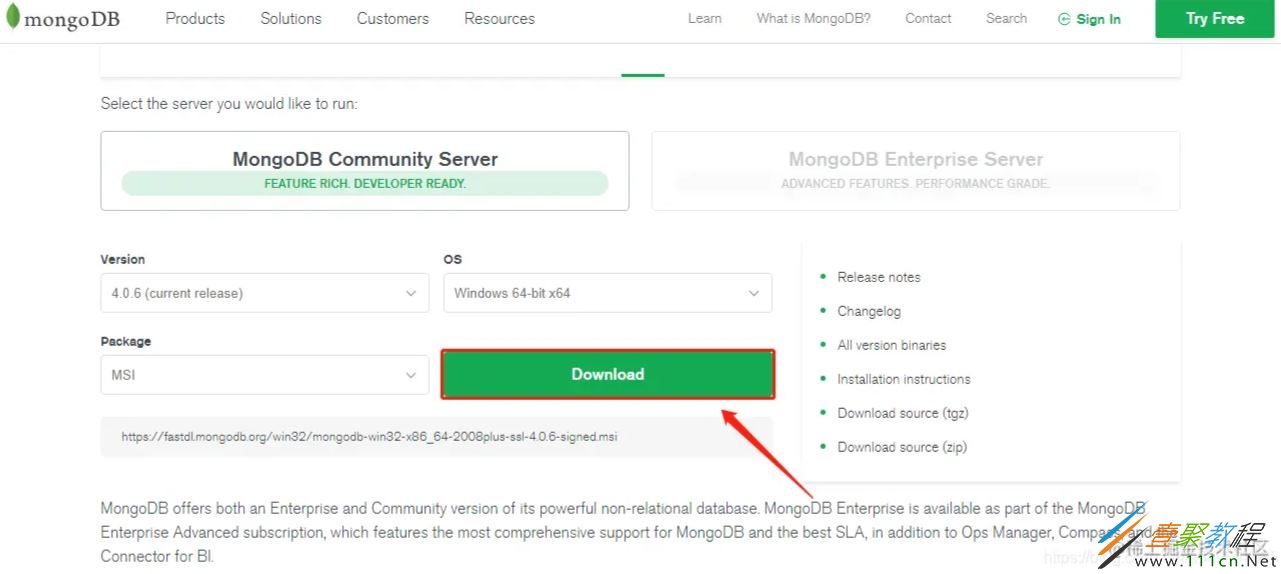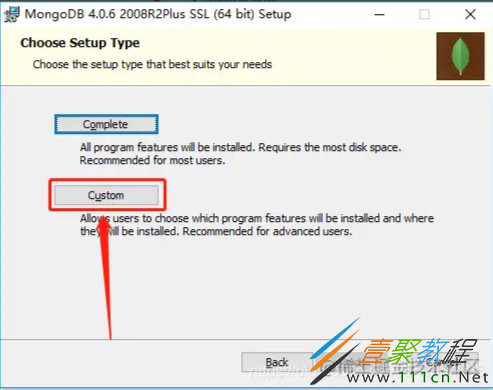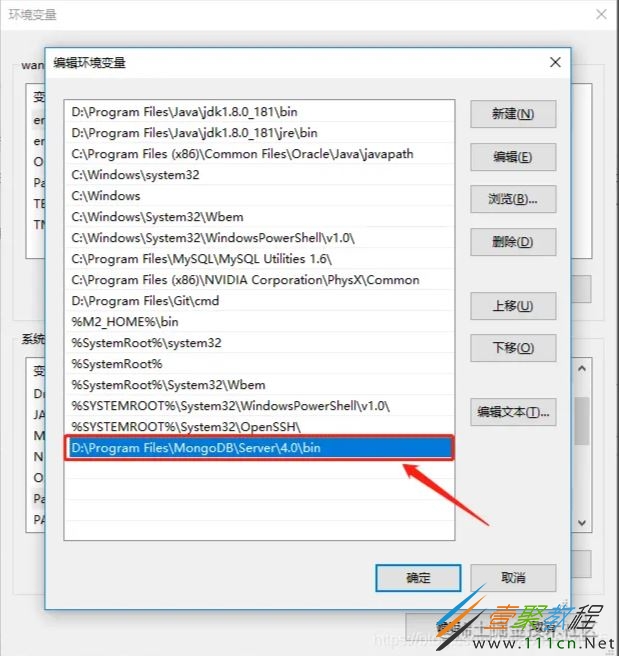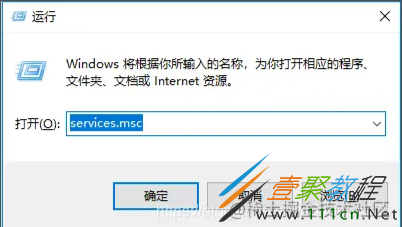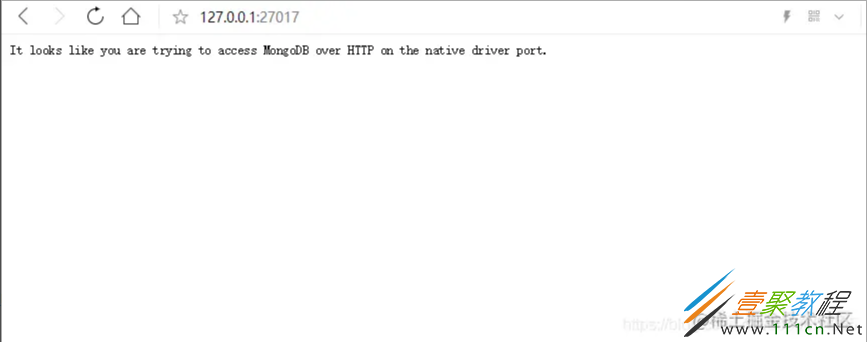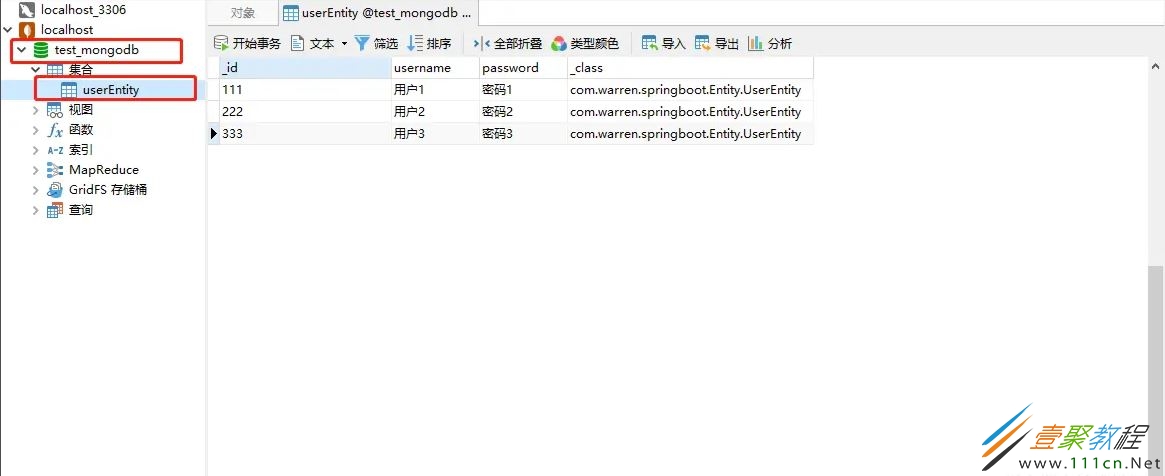SpringBoot整合Mongodb实现增删查改代码方法
本篇文章小编给大家分享一下SpringBoot整合Mongodb实现增删查改代码方法,文章代码介绍的很详细,小编觉得挺不错的,现在分享给大家供大家参考,有需要的小伙伴们可以来看看。
一、什么是MongoDB
MongoDB与我们之前熟知的关系型数据库(MySQL、Oracle)不同,MongoDB是一个文档数据库,它具有所需的可伸缩性和灵活性,以及所需的查询和索引。
MongoDB将数据存储在灵活的、类似JSON的文档中,这意味着文档的字段可能因文档而异,数据结构也会随着时间的推移而改变。文档模型映射到应用程序代码中的对象,使数据易于处理。MongoDB是一个以分布式数据库为核心的数据库,因此高可用性、横向扩展和地理分布是内置的,并且易于使用。况且,MongoDB是免费的,开源的。
二、在Window10上安装MongoDB
打开MongoDB官网
下载MSI版本(安装版)
下载的时候选择Custom
安装的时候,注意不要勾上安装可视化插件,否则安装会非常慢(除非你网速够快)
三、配置MongoDB服务
配置环境变量
复制当前路径
我的电脑->右键->高级系统设置->环境变量->系统变量
在系统变量找到Path,编辑,将上面复制的路径增加进去
四、启动服务
win+R->输入services.msc
服务启动后,在浏览器输入 127.0.0.1:2701
出现这行英语则代表服务启动成功。
五、SpringBoot整合MongoDB
环境准备
操作系统:Window10
IDE:IntelliJ IDEA 2018.2.4
数据库:MongoDB
1)引入依赖
org.springframework.boot spring-boot-starter-data-mongodb
2)在application.yml添加如下配置
spring:
data:
mongodb:
uri: mongodb://localhost/test_mongodb
完整的配置信息如下:
spring:
data:
mongodb:
authentication-database: # Authentication database name.
database: # Database name.
field-naming-strategy: # Fully qualified name of the FieldNamingStrategy to use.
grid-fs-database: # GridFS database name.
host: # Mongo server host. Cannot be set with URI.
password: # Login password of the mongo server. Cannot be set with URI.
port: # Mongo server port. Cannot be set with URI.
repositories:
type: # Type of Mongo repositories to enable.
uri: # Mongo database URI. Cannot be set with host, port and credentials.
username: # Login user of the mongo server. Cannot be set with URI.
3)新增实体类UserEntity
public class UserEntity {
@Id
private String uid;
private String username;
private String password;
public String getUid() {
return uid;
}
public void setUid(String uid) {
this.uid = uid;
}
public String getUsername() {
return username;
}
public void setUsername(String username) {
this.username = username;
}
public String getPassword() {
return password;
}
public void setPassword(String password) {
this.password = password;
}
@Override
public String toString() {
return "UserEntity{" +
"uid='" + uid + ''' +
", username='" + username + ''' +
", password='" + password + ''' +
'}';
}
}
4)新建测试。这里我用navicat作为MongoDB的可视化工具进行查看。
测试一:插入操作
@Autowired
private MongoTemplate mongoTemplate;
@Test
public void saveUser(){
UserEntity userEntity1 = new UserEntity();
UserEntity userEntity2 = new UserEntity();
UserEntity userEntity3 = new UserEntity();
userEntity1.setUid("111");
userEntity1.setUsername("用户1");
userEntity1.setPassword("密码1");
userEntity2.setUid("222");
userEntity2.setUsername("用户2");
userEntity2.setPassword("密码2");
userEntity3.setUid("333");
userEntity3.setUsername("用户3");
userEntity3.setPassword("密码3");
mongoTemplate.save(userEntity1);
mongoTemplate.save(userEntity2);
mongoTemplate.save(userEntity3);
}
数据库信息:
可以看到,MongoDB自动创建了数据库以及通过实体类生成了集合(也就是我们经常说的数据表),而且我们已经通过MongoTemplate往数据库的userEntity集合插入了几条文档(也就是插入了几条记录)。而 _id 为主键,_class 则为实体类包名+类名
测试二:查询操作
@Autowired
private MongoTemplate mongoTemplate;
@Test
public void findUserByUserName(){
String username = "用户1";
Query query=new Query(Criteria.where("username").is(username));
UserEntity user = mongoTemplate.findOne(query , UserEntity.class);
System.out.println(user);
}
输出结果:
UserEntity{uid='111', username='用户1', password='密码1'}
测试三:更新操作
@Autowired
private MongoTemplate mongoTemplate;
@Test
public void updateUser(){
UserEntity userEntity = new UserEntity();
userEntity.setUid("111");
userEntity.setUsername("更新后的用户名");
userEntity.setPassword("更新后的密码");
Query query = new Query(Criteria.where("_id").is(userEntity.getUid()));
Update update = Update.update("username",userEntity.getUsername()).set("password",userEntity.getPassword());
//更新返回结果集的第一条
mongoTemplate.updateFirst(query,update,UserEntity.class);
//更新返回结果集的所有
//mongoTemplate.updateMulti(query,update,UserEntity.class);
}
更新后数据库如图所示:
测试四:删除操作
@Autowired
private MongoTemplate mongoTemplate;
@Test
public void DeleteByUserId(){
String id = "222";
Query query=new Query(Criteria.where("_id").is(id));
mongoTemplate.remove(query,UserEntity.class);
}
删除后数据库如图所示:
相关文章
精彩推荐
-
 下载
下载一亿小目标手游
模拟经营 一亿小目标手游如果让你的人生从来,你可以像王健林一样霸气的表示一亿小目标吗
-
 下载
下载一亿小目标手机版2019
模拟经营 一亿小目标手机版2019一亿小目标手机版2019趣味休闲模拟游戏,玩家在游戏中将会通
-
 下载
下载巴啦啦梦幻餐厅
模拟经营 巴啦啦梦幻餐厅巴啦啦梦幻餐厅是一款充满魔幻色彩的二次元模拟经营手游,游戏界
-
 下载
下载恋爱进行时九游版
模拟经营 恋爱进行时九游版恋爱进行时九游版是一款以模拟恋爱玩法为核心的角色扮演手游,精
-
 下载
下载皇室对决fr(Null’s Royale)
模拟经营 皇室对决fr(Null’s Royale)皇室对决fr,即皇室战争的私服变态版本,在该版本中玩家能够拥


